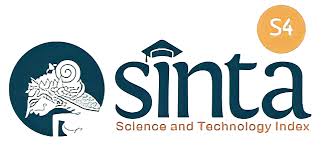Teknik Penerjemahan Arab-Indonesia Dalam Teks “Masāil fī al-Śiĥr" dengan Menggunakan Quillbot
DOI:
https://doi.org/10.37680/linguafranca.v3i2.6686Keywords:
Arabic-Indonesian, Arabic-Indonesian, QuillBot, Translation Techniques, Translation TechniquesAbstract
This study aims to analyze the translation techniques used by QuillBot in translating the text titled "مسائل في السحر" from the book "مسألة في الرقية والعين والمس والسحر ٦٠" by Sulṭān bin 'Abdullāh al-Umri. The research employs a qualitative descriptive method by classifying the translation results based on Molina and Albir's (2002) translation technique theory. The data analyzed include six translation techniques: transposition, reduction, modulation, amplification, calque, and naturalized borrowing. The study's findings reveal that modulation is the most dominant technique, appearing in 5 data points, followed by transposition and reduction, each with 4 data points. Amplification is used in 3 data points, while calque and naturalized borrowing are each applied to 1 data point. The analysis indicates that QuillBot's translations are generally acceptable but still have shortcomings in certain aspects that require human interpretation to maintain the acceptability of meaning. In conclusion, collaboration between translation software like QuillBot and human expertise is essential to produce accurate and contextually appropriate translations.
Downloads
Published
How to Cite
Issue
Section
License
Copyright (c) 2025 Nurul Fitriyah, Maulida Auladina Fadheela EF, Mohamad Zaka Al Farisi, Rinaldi Supriadi

This work is licensed under a Creative Commons Attribution-NonCommercial 4.0 International License.
Lingua Franca: Jurnal Bahasa dan Sastraallow the author(s) to hold the copyright without restrictions and allow the author(s) to retain publishing rights without restrictions, also the owner of the commercial rights to the article is the author.
License:
- Attribution: You must provide an appropriate name, include a link to the license, and certify that changes have been made. You can do this in an appropriate manner, but do not imply that the licensor supports you or your use.
- Share Alike: If you compose or make derivatives of these materials, you must distribute your contributions under the same license as the original materials.
- No additional restrictions: You may not use legal provisions or technological means of control that legally restrict others from doing the things this license allows.
You are free to:
- Share, copy, and redistribute this material in any form or format.
- Adapt, modify, and create derivatives of this material for any purpose, including commercial purposes.
- The licensor cannot revoke the above terms as long as you comply with the terms of this license.
Creative Commons Attribution-ShareAlike 4.0 International License (CC BY-SA 4.0).



